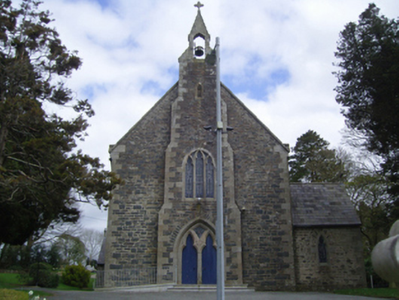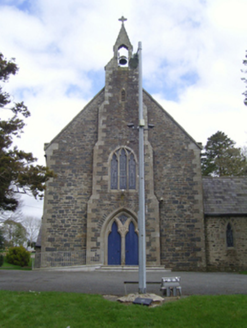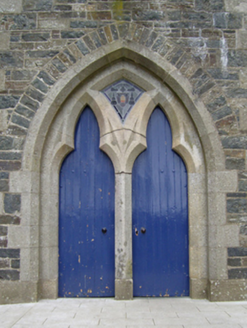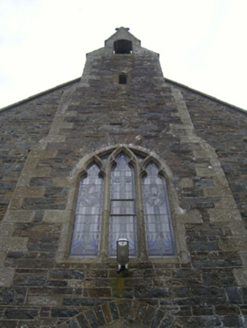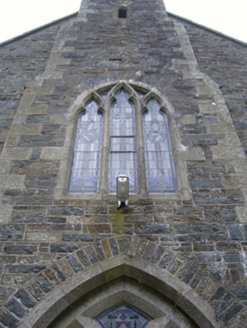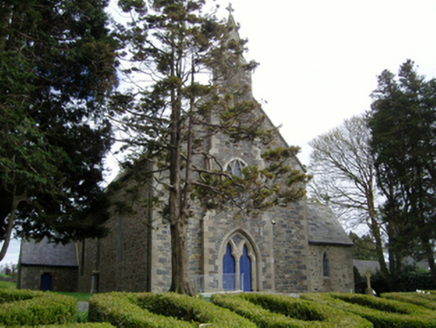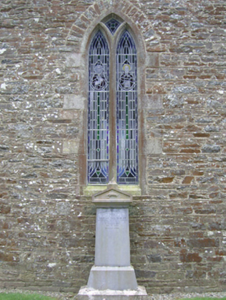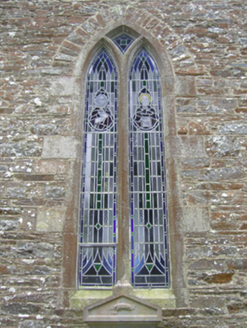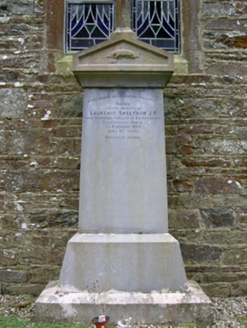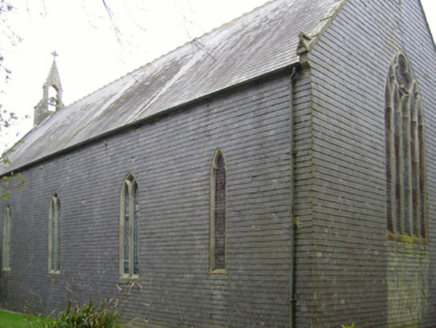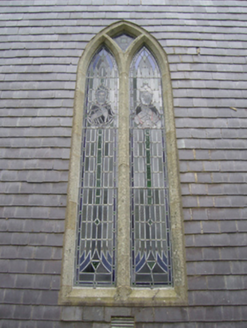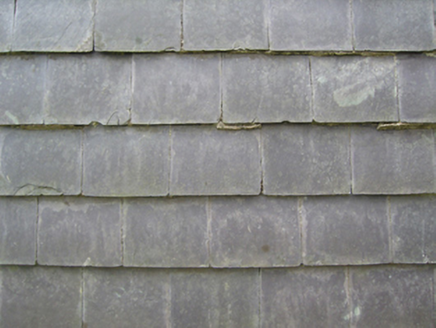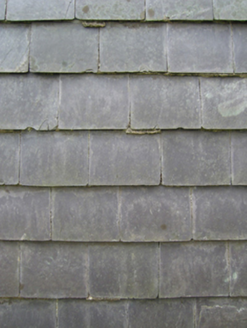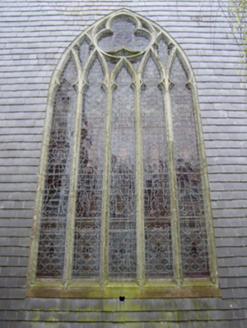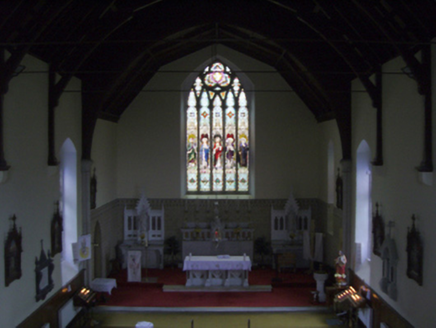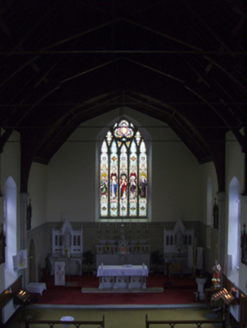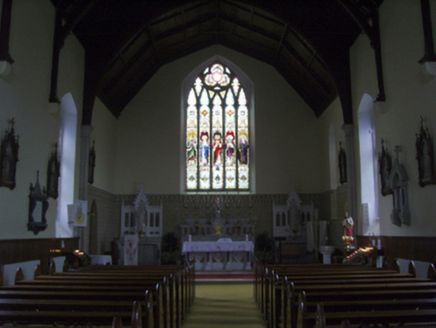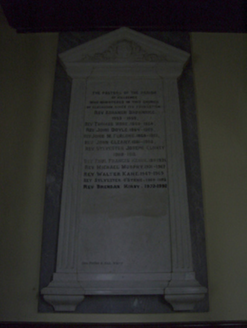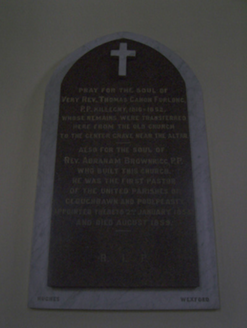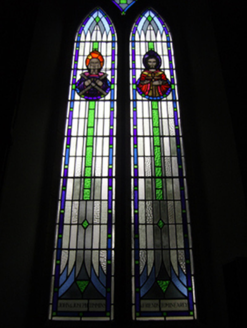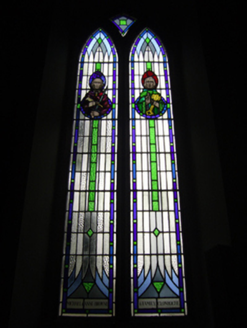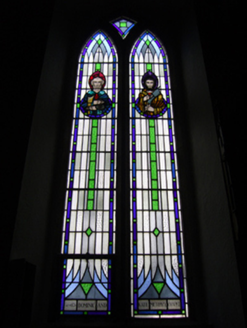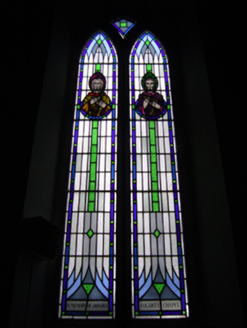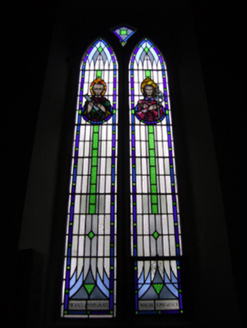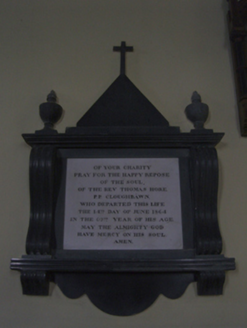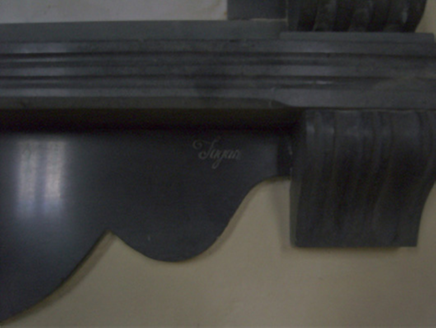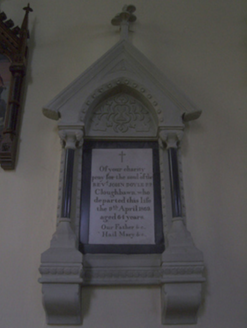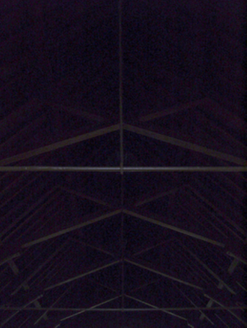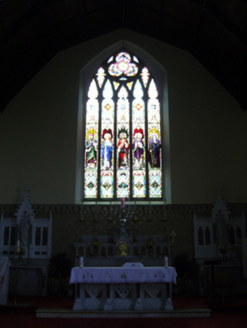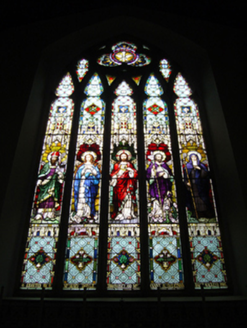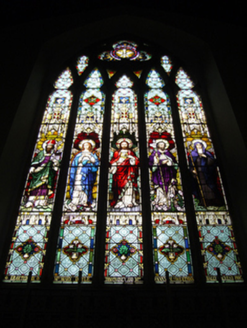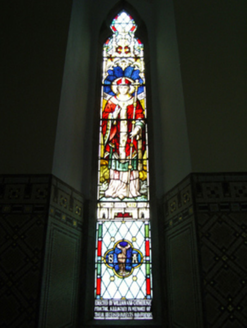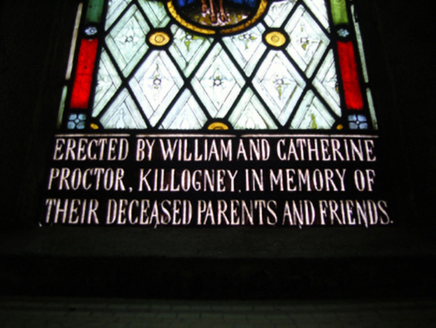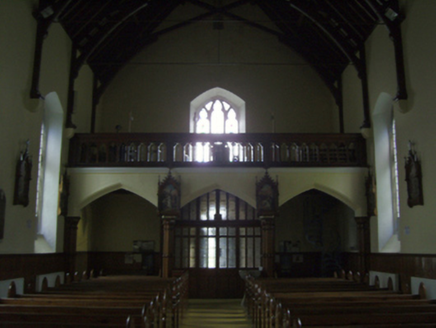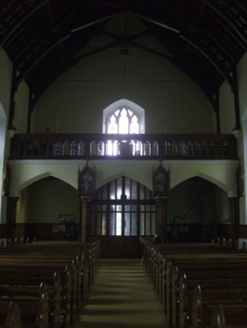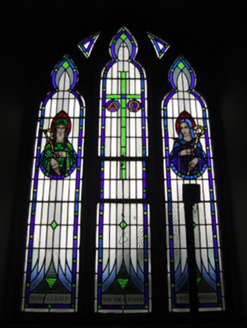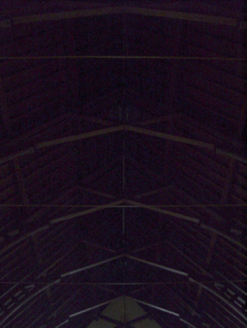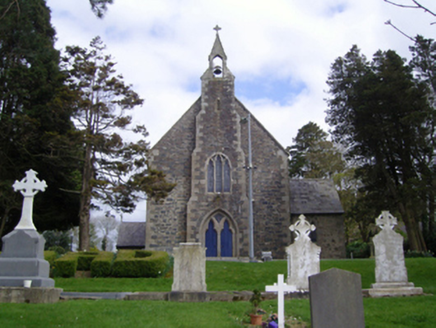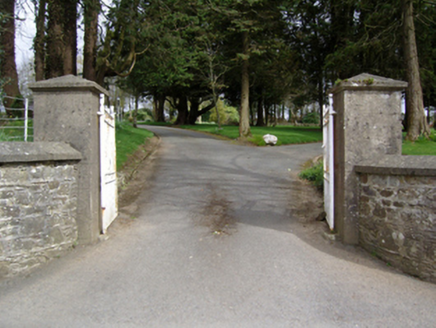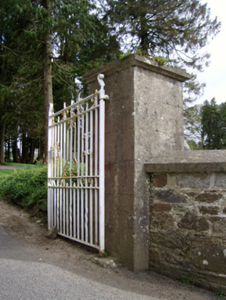Survey Data
Reg No
15702526
Rating
Regional
Categories of Special Interest
Architectural, Artistic, Historical, Scientific, Social, Technical
Original Use
Church/chapel
In Use As
Church/chapel
Date
1855 - 1860
Coordinates
287567, 134797
Date Recorded
21/08/2007
Date Updated
--/--/--
Description
Detached three-bay double-height single-cell Catholic church, built 1858-9, on a rectangular plan with single-bay full-height buttressed gabled breakfront to entrance (west) front. Renovated, 1909, with interior "improved". Renovated, ----, with sanctuary reordered. Pitched slate roof with part-perforated crested roll moulded clay ridge tiles, cut-granite "slated" coping to gables on trefoil-detailed gabled kneelers including cut-granite "slated" coping to gable to entrance (west) front on trefoil-detailed gabled kneelers with granite ashlar buttressed gabled bellcote to apex framing embossed cast-bronze bell ("1863"), and cast-iron rainwater goods on slate flagged eaves retaining cast-iron downpipes. Part repointed tuck pointed coursed or snecked rubble stone walls to entrance (west) front with benchmark-inscribed cut-granite flush quoins to corners; slate hung surface finish (remainder). Pointed-arch window openings with cut-granite Y-mullions, and cut-granite block-and-start surrounds having chamfered reveals framing fixed-pane fittings having stained glass margins centred on leaded stained glass panels. Pointed-arch window opening to chancel (east) with cut-granite mullions, and cut-granite surround having chamfered reveals framing iron mesh storm panels over fixed-pane fittings having leaded stained glass panels. Pointed-arch "Trumeau" door opening to entrance (west) front with cut-granite step threshold, and cut-granite block-and-start surround having chamfered reveals framing timber boarded doors. Pointed-arch window opening with cut-granite mullions, and cut-granite block-and-start surround having chamfered reveals framing fixed-pane fittings having stained glass margins centred on leaded stained glass panels. Lancet "arrow loop" opening (gable) with cut-granite surround having chamfered reveals framing louvered fitting. Interior including vestibule (west); square-headed door opening into nave with glazed timber panelled double doors having sidelights on panelled risers below overlight; full-height interior open into roof with choir gallery (west) on clustered colonette pillars below stained glass "West Window" (----), carpeted central aisle between quatrefoil-detailed timber pews, perforated timber boarded or tongue-and-groove timber panelled wainscoting supporting carved timber dado rail, paired Gothic-style timber stations between stained glass memorial windows (----), Classical-style wall monument (ob. 1864) with Gothic-style wall monument (ob. 1869), exposed braced scissor truss timber roof construction on cut-granite beaded corbels with wind braced rafters to timber boarded ceiling on carved timber cornice, and pointed-arch chancel arch framing carpeted cut-veined white marble stepped dais to sanctuary (east) reordered, ----, with cut-veined white marble Gothic-style memorial side altars (1909) centred on cut-veined white marble panelled altar (1909) below stained glass memorial "East Window" (1906). Set in landscaped grounds with rendered piers to perimeter having lichen-spotted pyramidal capping supporting wrought iron double gates.
Appraisal
A church erected under the aegis of Reverend Abraham Brownrigg PP (d. 1859), and with financial support from Sir Robert Shapland Carew (1787-1856) or Sir Robert Shapland Carew (1818-81) of Castleboro House (Lacy 1863, 480), representing an important component of the mid nineteenth-century built heritage of County Wexford with the architectural value of the composition, one succeeding a nearby chapel (1799) marked on the first edition of the Ordnance Survey (surveyed 1840; published 1841), suggested by such attributes as the rectilinear "barn" plan form, aligned along a liturgically-correct axis; the "pointed" profile of the openings underpinning a "medieval" Gothic theme with the chancel defined by a cusped "East Window"; and the handsome bellcote embellishing the roofline as a picturesque eye-catcher in the landscape. Having been well maintained, the elementary form and massing survive intact together with substantial quantities of the historic or original fabric, both to the exterior and to the interior reordered (----) in accordance with the liturgical reforms sanctioned by the Second Ecumenical Council of the Vatican (1962-5) where contemporary joinery; Art Deco-like stained glass; wall monuments commemorating Reverend Thomas Hore PP (d. 1864) and Reverend John Doyle PP (d. 1869); a much-modified altar (1909) attributed to Ashlin and Coleman (formed 1903) of Dawson Street, Dublin (DIA); gilded mosaic work; and the vibrant Doyle-Sweetman Memorial "East Window" (1906), all highlight the artistic potential of the composition: meanwhile, an exposed timber roof construction pinpoints the engineering or technical dexterity of a church forming part of a neat self-contained group alongside an adjacent presbytery (see 15702527) with the resulting ecclesiastical ensemble making a pleasing visual statement in a sylvan street scene.

